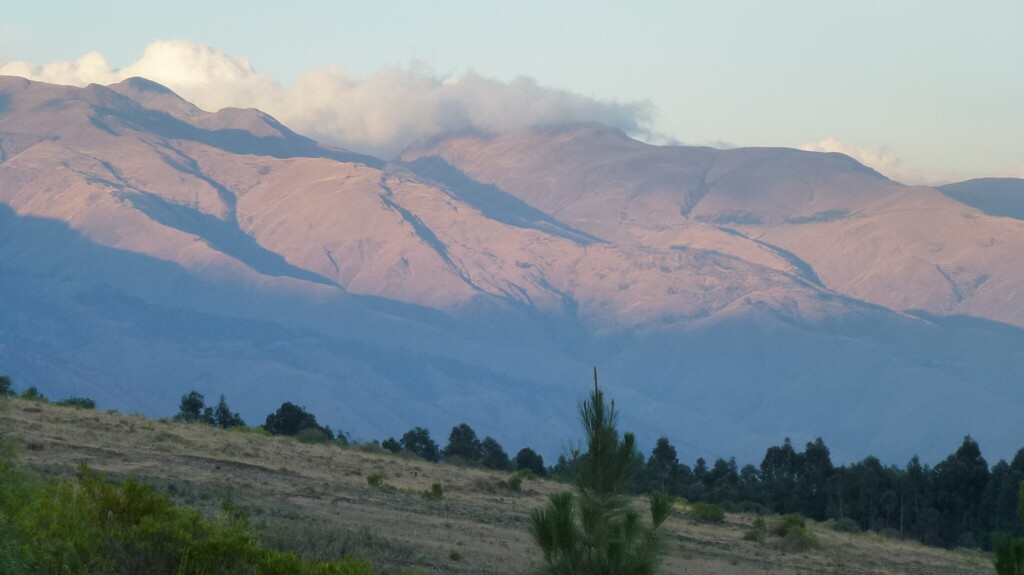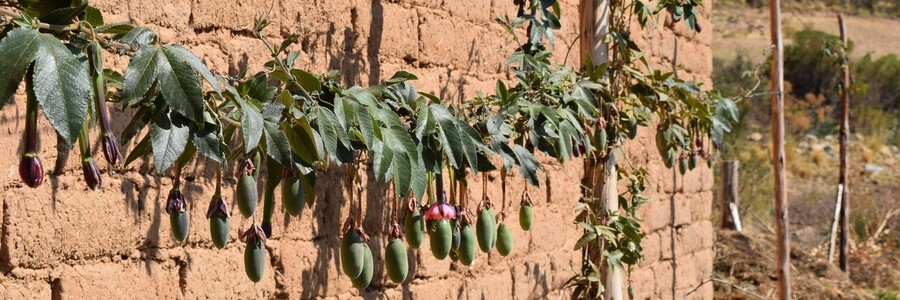Naturefund receives many new enquiries
Officially, our reforestation project in Bolivia with 10,000 trees has ended successfully. But our project with the introduction of dynamic agroforestry around the Tunari National Park is so successful that we can hardly save ourselves from enquiries. All of a sudden, the district governments are coming and asking us if they can join in. Even the government of Cochabamba, comparable to the state of Hesse, wants to work with Naturefund. Not only that, the director of all 22 national parks in Bolivia also wants to cooperate with Naturefund.
So I flew to Bolivia to evaluate the first two stages of the project with 10,000 trees. The results are very good and we have again planted more than officially stated. I don't have the actual compilation yet, but it should be about 15,000 trees. Naturefund always plants more trees to be on the safe side.
Severest drought in Bolivia in 25 years
Bolivia is currently experiencing the worst drought in 25 years. The small rainy season in August has failed and the big rainy season, which was supposed to start in early November, is delayed. Almost all water tanks are empty, as are the natural water reservoirs in the mountains. La Paz, a city of millions, is on the verge of collapse. For weeks, some neighbourhoods have had no water, i.e. people cannot cook, wash or go to the toilet, because the water flushes no longer work. We spoke to someone from the German Embassy who told us the situation is very serious. Families with children are advised to go back to Germany and the Technical Relief Agency has been informed. A city with millions of people without water is threatened with cholera and the like. Yes, it is the consequences of climate change and it is also human error.
Now to our plots ... despite the long drought, over 90% of the trees we planted survived! The method of dynamic agroforestry with high diversity, high density and pruning makes it possible. The different plant species form consortia that support each other during this drought. The thick mulch layer of biomass prevents the soil from drying out. I have seen seedlings of apple trees at 4,000 m altitude that we planted 8 months ago and they have not been watered except initially. They are still green.
We are of course continuing with the project
It would really be too bad not to take advantage of the great interest in dynamic agroforestry and the opening of government agencies to this alternative form of cultivation. We are currently receiving support for this from the Federal Ministry for Economic Cooperation and probably also from the German Embassy in Bolivia. It will be enough for a start, but we will certainly ask for donations for Bolivia again at some point ...
Our focus in the third phase, besides supporting smallholder families, will also be on training and disseminating the dynamic agroforestry method. We have set up a curriculum with theoretical and practical parts. All technicians in the third phase of the project have to go through this training, even if they already know some things. We want to create a common basis in the method of dynamic agroforestry. At the end there will be a certificate from Naturefund.
But this will not be enough
We now have many requests for this method worldwide. Naturefund is still too small to be able to serve all of them equally. Therefore we will produce an educational video in different languages about this method. The video will not be able to replace the training, especially because of the practical part under the guidance of an expert. But a video at least offers the possibility to start with dynamic agroforestry even without training.
In our eyes, it is one of the best, if not the best, cultivation and reforestation methods worldwide, especially for the needs of smallholder families. The results in Bolivia confirm our view. This method creates a natural forest-like system with high productivity that rebuilds and makes fertile even severely degraded soil in a short time. It creates a healthy soil that can store much more water than without dynamic agroforestry. This means that dynamic agroforestry plots can better compensate for climate fluctuations. Chemical additives such as fertilisers or pesticides are hardly ever needed, and in most cases not at all. And ... new habitats are created for many species, some of which are threatened with extinction.
Despite the drought, despite the current high rate of deforestation, especially in Bolivia, I have hope. Hope that humanity will find new ways to live in greater harmony and respect with natural resources and nature.

